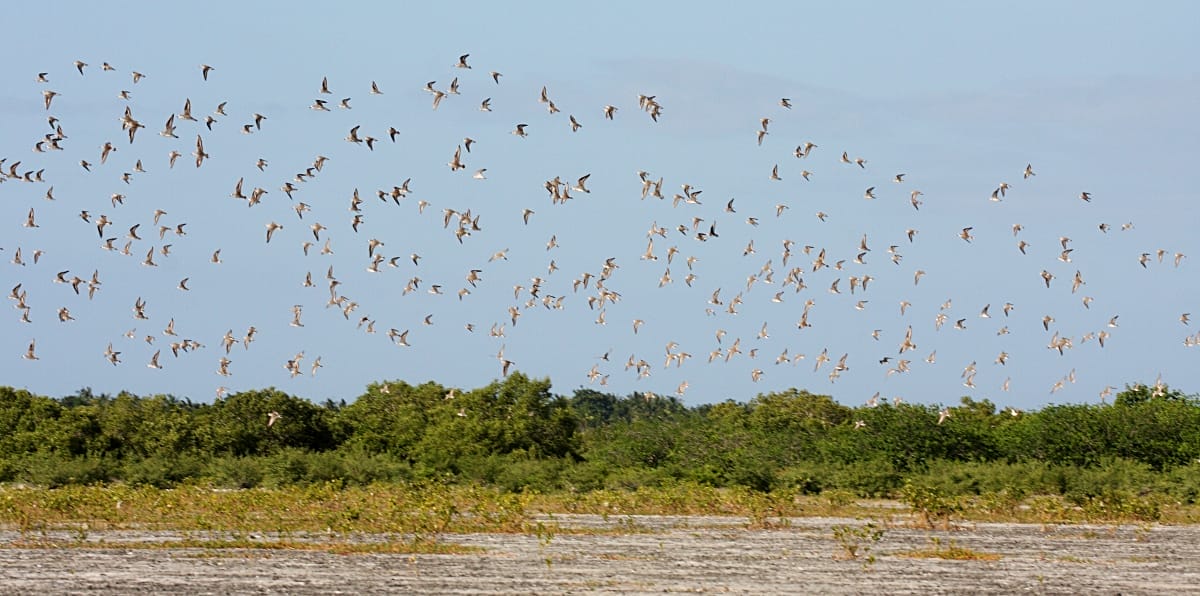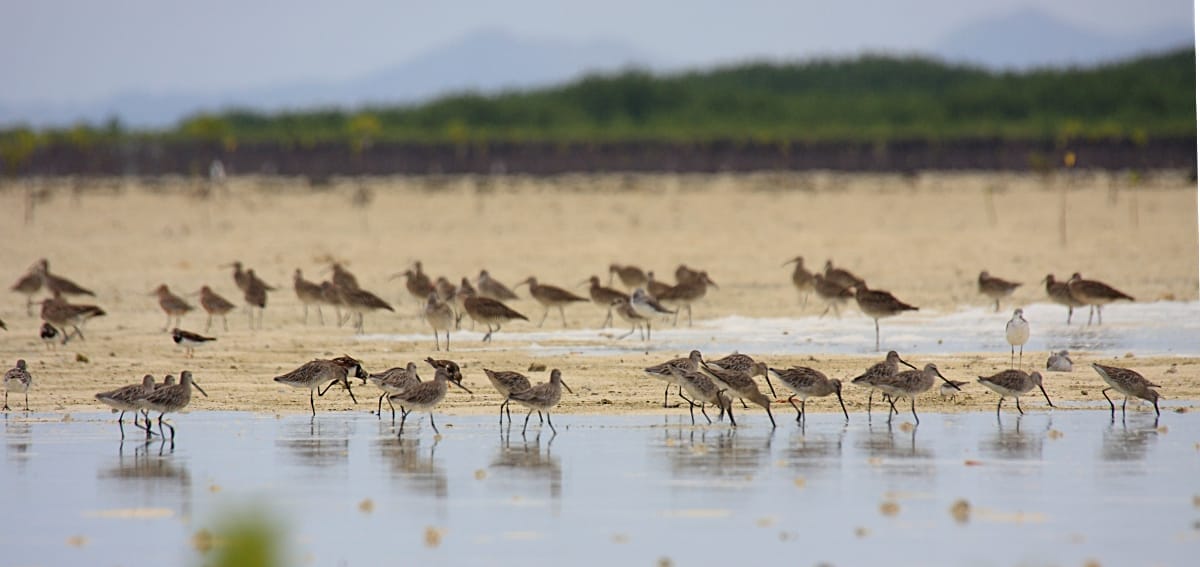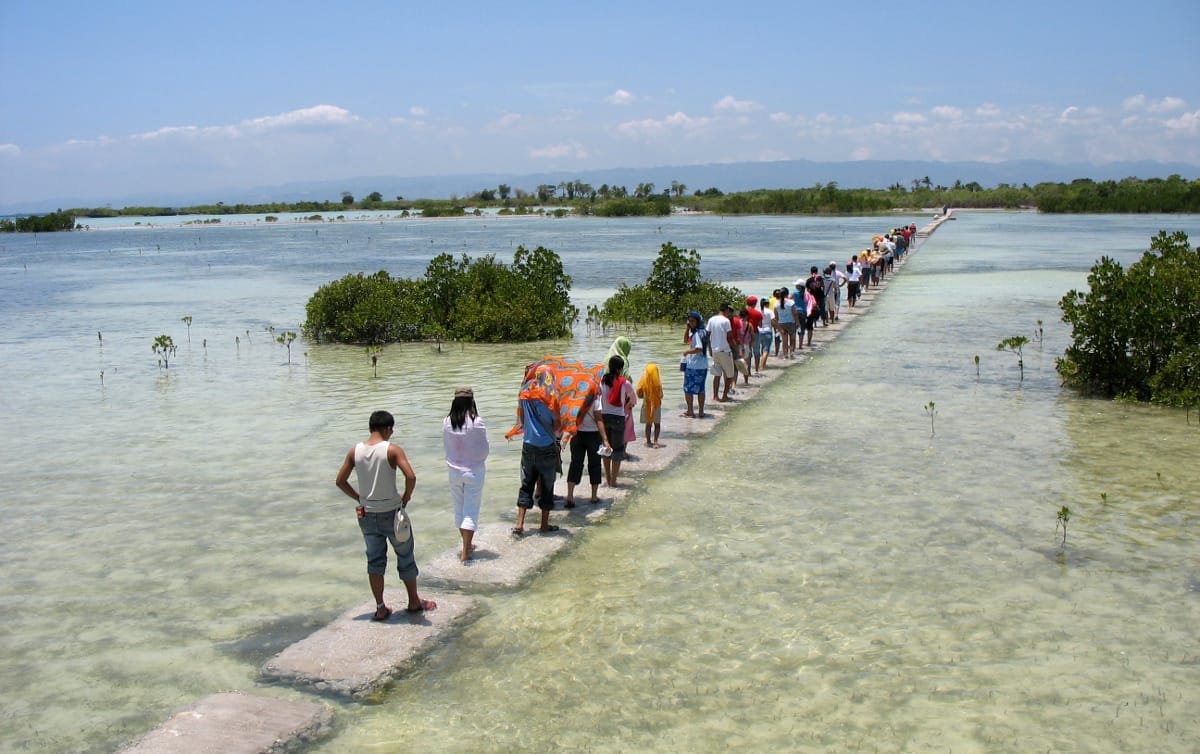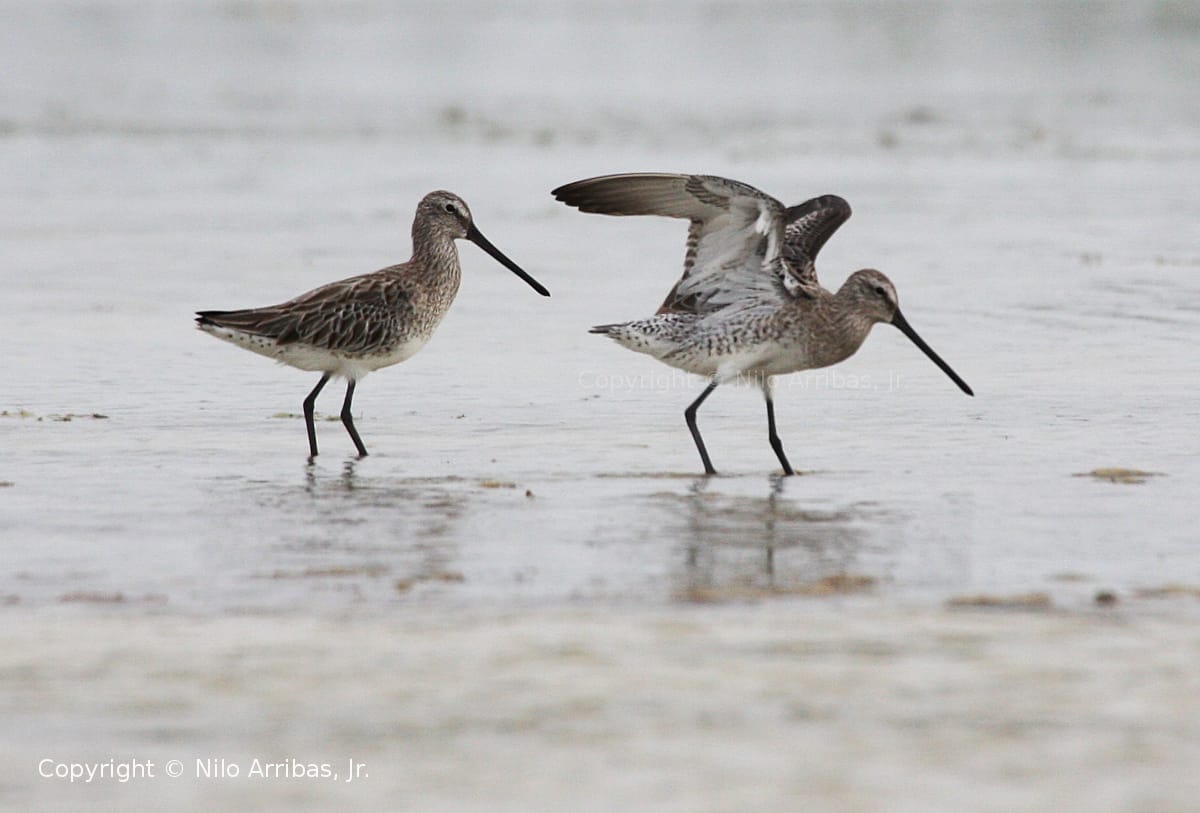Experienced birder Nilo Arribas, Jr. shares tips on how to make the most of the migration season with a well-prepared trip to Olango.
[slideshow]
click on the play button to view the photos as a slide show
A SHORT GUIDE TO BIRDING
IN OLANGO ISLAND WILDLIFE SANCTUARY (OIWS)
By: Nilo Arribas, Jr.

The Olango Island Wildlife Sanctuary (OIWS) is one of the four RAMSAR sites or wetlands of international importance in the Philippines. The Olango island group is about five (5) kilometers east of Mactan island which is part of the Cebu Province. The sanctuary, with over 900 hectares of coastal habitat is on the southwestern portion of the Olango island. This site has gained national and international prominence primarily due to the thousands of migratory shorebird birds recorded in the area. The OIWS is in the middle of the East Asian–Australasian Flyway which stretches from Alaska and Russia in the north to Australia and New Zealand in the south. The annual migration happens towards the winter months starting September when the birds would leave their breeding areas in the northern hemisphere. The northward migration happens towards the months of March to May. The shorebirds around this time of the year maybe seen transitioning to their colorful breeding plumage as they prepare for their long migration to the breeding areas in the north.
There are more than forty species of migratory birds recorded in this site. The flagship species at the OIWS are the Asiatic Dowitcher (Limnodromus semipalmatus) and the Chinese Egret (Egretta eulophotes).


The Bar-tailed Godwits, Far Eastern Curlews, Whimbrels, Great Knots, Ruddy Turnstones, Terek Sandpipers, Red-necked Stints, Plovers are some of my personal favorites.



Planning a Trip:
There are birds in the wildlife sanctuary all year round. However, the peak of the migration season which are the months of December, January and February offers a good chance of seeing huge congregation of migratory waders and shorebirds.
There are several factors that should allow first time visitors to make the most out of the trip to this birding paradise. The tide pattern is one of the important factors to consider. The best time to be in the viewing deck or bird hide of the sanctuary is during the shift from low to high tide. A high tide of 1.4 meters or higher is ideal in herding together flocks of foraging shorebirds slowly into their roosting areas among the mangrove patches.

Some visitors may experience low turnout of birds during low tide. The shorebirds in the sanctuary are usually dispersed during low tide and can easily be overlooked by unaided eyes in the vast coastal sandflat. In this case, the viewing deck is still the ideal platform to mount the spotting scope when scanning for distant bird activity.
How to get there:
There are several ways to get to the OIWS depending on the jump-off point for the trip:
- From the Mactan International Airport, you can take a taxi to the pier beside the former Hilton hotel (now called Movenpick Resort and Spa) in Brgy. Punta Engano, Mactan. One alternative is the smaller pier in Angasil also in Mactan but it would be easier for non-residents to take the Hilton Pier. Travel time from Mactan International Airport to the Hilton Pier is about 15-25 minutes. In addition, travel time from downtown Cebu City to Hilton Pier in Mactan is about 45 minutes depending on the traffic condition.
- In the Hilton Pier, you can take the pump boat to Sta. Rosa Pier in Olango island starting at 6:00am in the morning to 5:30pm in the afternoon with a 30-minute interval between trips. There is also a RO-RO (roll-on roll-off barge) that can take vehicles to the island starting at 9:00am. The schedule and availability of the barge may vary and its better to plan a trip based on the pump boat schedules. Travel time from Hilton Pier to Sta. Rosa Pier in Olango island is about 25-30 minutes.
- From Sta. Rosa Pier, you can take a tricycle to the “Sanctuario” or the Olango Island Wildlife Sanctuary (OIWS). The trip is considered a special trip hence you will be paying for the full capacity rate of the tricycle. You have to make sure that your tricycle arrangement includes the pickup time for your return trip to Sta Rosa Pier. The round-trip arrangement is about P200.00. Travel time from Sta. Rosa Pier to OIWS is about 15-20 minutes.
Applicable rates and fees at OIWS:
- Admission fee isP20.00 for locals and P100.00 for foreign visitors.
- If you are going to take photos of birds, the rate is P500.00.
Note: The above rates are covered by the Department of Environment and Natural Resources (DENR) circular and visitors should expect official receipt from the Republic of the Philippines (national government) upon payment.
Important reminders for visiting birders at OIWS:
- Wear comfortable clothing suited for warm tropical environment.
- Exposure to direct sunlight is expected while moving from one birding lookout to another so appropriate sun protection should be considered and a cap or hat is a definitely advisable.
- Sandals or diving boots would be desirable if you expect to wade through the water. Otherwise a pair of comfortable shoes should work fine.
- Bring sufficient supply of drinking water for personal hydration for the entire duration of the trip.
- Provision for meals and snacks depending on the length of stay should be considered since there are no restaurants or places to buy these while in the sanctuary.
- There is no fresh water source for washing in the nature center except harvested rainwater stored in a water tank.
- Binoculars and scope should be useful. There are binoculars and scope in the nature center but availability is on a first-come-first-served basis.
- Field guides and other book references are also useful.

The annual Asian Waterbird Census (AWC):
The annual Asian Waterbird Census is usually conducted on the third week of January. For those who are keen on doing volunteer work, this is the best time to explore the area with shorebirds in mind. The staff of the Department of Environment and Natural Resources (DENR) can facilitate the inclusion of volunteers in the the census groups with prior arrangement. 
- Asian Waterbird Census – photo by Nilo Arribas Jr.
Other possible activities:
The outdoor environment in the sanctuary is a good place to commune with nature. If you are traveling with non-birding companions, they can stay in the nature center and savor the relaxing atmosphere of clean seaside breeze. The open areas around the sanctuary is teeming with life in the form of small invertebrates, crustaceans, fiddler crabs and other interesting wildlife. The exploration of the ecosystem that supports thousands of migratory birds should be an equally interesting activity during high tide or when its too hot to be out in the field.



Hello,
I’m the planner of TV program”Hakka Oversea” from Taiwan.
Last month we visited Olango Island,for the better introduction(Olango Island as a flyways in the world for migrating birds is very important.),we’d like to get your agree to use these pictures in the video.
Thanks for your help!
Miss Lee
Hi Miss Lee,
You can use the pictures but please include full credit to the Wild Bird Club of the Philippines and this Monthly Online Nesletter (e-BON).
Thank you and best regards from our islands.
Nilo
Nilo,
Trying to contact you re birding on Cebu pjohnson@ua.edu
Hi, this is Megan from Visit Cebu. We’d like to share your photo (A flock of shorebirds – photo by Nilo Arribas Jr.) for one of our articles–we will of course give the appropriate credits to you. Just let us know if you wish to have it taken down. Thanks!